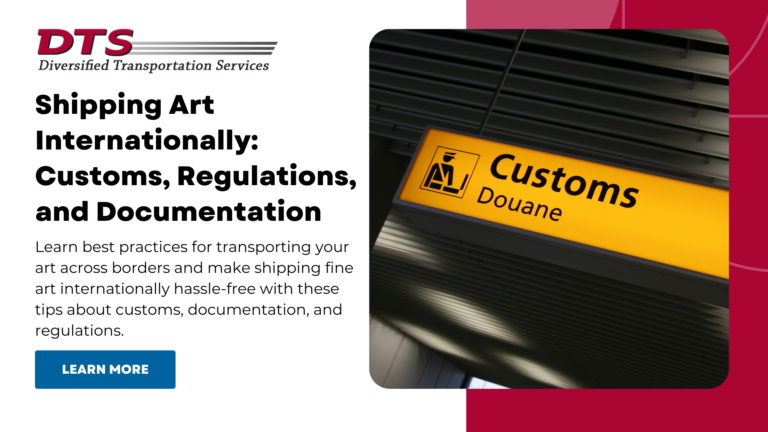
Fine art shipping can be a confusing process. You want the best possible protection without paying unreasonable shipping costs. Shipping art internationally adds another level of complexity to the process, but knowing what to expect can make things easier. Here are a few tips about customs, regulations, and paperwork when shipping art internationally.
There’s a lot to consider when shipping fine art internationally, including customs, various regulations for different countries, and proper documentation. Here’s what you need to know to handle each of those.
Depending on where you are and where your art is going, you’ll need to deal with customs documentation and fees for each piece of art you ship internationally. However, this can change if you’re shipping within the same customs union.
A customs union is a group of countries that apply the same procedures, rules, and tariffs for the majority of their imports and exports. The largest customs union is the European Union, which is made up of 27 member states. In the case of the EU, most tariffs and trade barriers have been eliminated, allowing for easy transportation of goods between countries within the union. The EU also has a standard external tariff, which applies to goods imported from countries outside the EU.
It’s important to note that the US is not a part of any customs union, so you’ll need to look at the specific policies, tariffs, and documentation requirements of any country you’re shipping to or receiving from. You’ll also need to make sure to fill in the correct form, as there are two different customs forms based on the value of your artwork.
Regulations for international art shipping will vary depending on where you’re shipping to. You need to research the country you’ll be shipping your art to, ensuring that you understand their regulations, what fees need to be paid, and what paperwork is required.
Regulations can also differ depending on what kind of fine art you want to ship. For example, importing original works—with or without frames—into the US is duty-free for the majority of cases under Chapter 97 of the Harmonized Tariff Schedule (HTS). However, you may need to pay duty if the frame is not valued in line with typical expectations. The regulation also does not apply to hand-painted or hand-decorated articles, such as hand-painted woven fabrics and ceramic wares.
Finally, your intention for shipping fine art can also affect which regulations you need to follow. For example, you’ll need to follow different guidelines if you plan to sell the artwork versus shipping it for exhibition.
Getting your paperwork right is crucial for a smooth shipping process. Get it wrong, and you risk disruption to your shipment and potential fines for not complying with regulations. Here are some of the standard pieces of paperwork you’ll need to ship fine art internationally.
If this sounds a little complicated, it’s because it certainly can be when you go it alone! That’s why it’s always a good idea to work with an international art shipping company to manage your shipment.
With an international art shipping team, DTS makes the process of shipping fine art internationally easy. Get in touch today to learn more.
Whether you're a company looking to improve one facet of your supply chain, your entire supply chain, or simply looking for a transportation and logistics consultation, we can help.